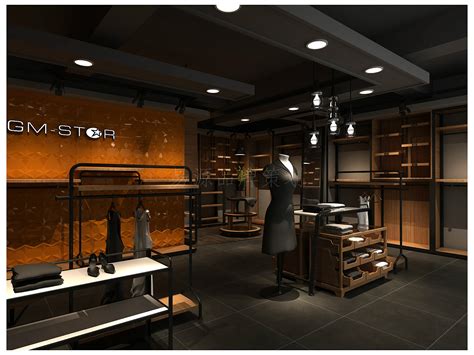您所在的位置:首页 - 经验 - 正文经验
服装店人员配置依据是什么
![]() 帝佐
2024-05-09
【经验】
1020人已围观
帝佐
2024-05-09
【经验】
1020人已围观
摘要**OptimizingStaffingforaClothingStore**Inthedynamicrealmofretail,thecompositionofyourstaffispivotalt
Optimizing Staffing for a Clothing Store
In the dynamic realm of retail, the composition of your staff is pivotal to the success of your clothing store. From providing exceptional customer service to managing inventory, each role contributes significantly to the overall operations and customer experience. Let's delve into the optimal staffing configuration for a clothing store, considering various factors such as store size, customer flow, and operational requirements.
Understanding Staffing Roles
1.
Sales Associates:
Sales associates are the frontline representatives of your clothing store. They assist customers in finding products, offer styling advice, and ensure a seamless shopping experience. The number of sales associates required depends on factors like foot traffic, peak hours, and store layout.
2.
Cashiers:
Cashiers handle transactions efficiently, process payments, and manage customer inquiries at checkout. The number of cashiers needed is influenced by transaction volume, checkout speed, and the integration of selfcheckout options.
3.
Visual Merchandisers:
Visual merchandisers are responsible for creating captivating displays, arranging merchandise, and maintaining the visual appeal of the store. Their presence enhances the aesthetic appeal and influences customer engagement and purchasing decisions.
4.
Stock Clerks:
Stock clerks manage inventory, restock shelves, and ensure that products are readily available for customers. The number of stock clerks required depends on factors such as inventory turnover rate, shipment frequency, and storage space.
5.
Store Managers:
Store managers oversee all aspects of store operations, including staff management, customer service, sales performance, and inventory control. They play a crucial role in driving sales, fostering a positive work environment, and implementing strategic initiatives.
Factors Influencing Staffing Levels
1.
Store Size and Layout:
The physical dimensions and layout of your store impact the distribution of staff. Larger stores may require more sales associates to cover different sections, while smaller boutiques may operate efficiently with fewer staff members.
2.
Customer Traffic Patterns:
Analyzing customer traffic patterns helps in allocating staff resources effectively. Peak hours and seasonal fluctuations in foot traffic should be taken into account to ensure adequate staffing levels during busy periods.
3.
Product Assortment and Specialization:
The complexity of your product assortment and the level of specialization influence staffing needs. For example, stores offering personalized tailoring services or niche products may require additional specialized staff.
4.
Technology Integration:
Leveraging technology such as pointofsale systems, inventory management software, and selfcheckout kiosks can streamline operations and impact staffing requirements. Automation can reduce the need for certain roles while enhancing efficiency in others.
5.
Customer Service Standards:
Maintaining high standards of customer service necessitates sufficient staffing levels to cater to customer needs promptly. Investing in staff training and development ensures that employees are equipped to deliver exceptional service.
Best Practices for Staffing Configuration
1.
Flexible Scheduling:
Implementing flexible scheduling practices allows you to adapt staffing levels based on demand fluctuations. Utilize scheduling software to optimize shift assignments and accommodate employee preferences.
2.
CrossTraining Staff:

Crosstraining employees across different roles enhances versatility and enables smoother operations during peak periods or staff shortages. This flexibility ensures that essential functions are covered at all times.
3.
Performance Monitoring:
Regularly monitor key performance indicators (KPIs) such as sales metrics, customer satisfaction scores, and employee productivity to assess staffing effectiveness. Adjust staffing levels based on performance insights and customer feedback.
4.
Feedback Mechanisms:
Encourage open communication channels for staff to provide feedback on workload, customer interactions, and operational challenges. Addressing concerns promptly fosters a supportive work environment and improves overall efficiency.
5.
Continuous Improvement:
Embrace a culture of continuous improvement by soliciting employee input for process enhancements and workflow optimizations. Regularly review staffing strategies and adapt them to evolving market trends and customer preferences.
Conclusion
Optimizing staffing for a clothing store involves a strategic blend of understanding customer needs, operational requirements, and workforce capabilities. By carefully assessing factors such as store size, customer traffic, and technology integration, you can develop a staffing configuration that enhances efficiency, maximizes sales opportunities, and elevates the overall shopping experience. Investing in employee training, performance monitoring, and feedback mechanisms cultivates a motivated workforce dedicated to achieving organizational goals. With the right staffing strategy in place, your clothing store can thrive in a competitive retail landscape.
上一篇: 模特走秀出场服装策划方案
下一篇: 迪奥小箱包官网报价
最近发表
- 缅甸强震前后对比图,大量房屋成平地,揭示灾难的残酷与重建的希望
- 关于缅甸地震的谣言与真相,专家为您解读地震预测与防范
- 缅甸华人,被屏蔽的世界角落
- 汤加群岛遭遇7.3级地震,大自然的力量与人类的应对
- 日本核污染水排放,影响与关注
- 男子遭遇女子追骂,对方自称司法局身份,探究事件的背后与影响
- 高空泳池遇地震,瀑布般的惊险瞬间
- 震中曼德勒市震后航拍画面曝光,灾难与重建的交织画卷
- 街道办强拆鱼塘被判赔380万却无钱支付,反思背后的法治与责任问题
- 缅甸地震,一把巨刀切入地球,揭示自然的威力与人类的脆弱
- 胡塞发言人将儿子送往中国,真相究竟如何?
- 守护天使的力量,地震时护士用身体护住宝宝的勇气与智慧
- 王一博GT中国杯热身赛获亚军——解读他的成功背后的故事
- 缅甸地震,灾难之下的人间悲剧
- 揭秘三十年逃亡路,男子因杀害妻子情夫落网记
- 缅甸华侨遭遇困境,聚焦被困同胞的紧急救援与心灵关怀
- 在缅华人,废墟之下,求救声切切
- 缅甸地震的威力,堪比上千个原子弹的冲击
- 媒体,人类的灾难不该拿来调侃
- 淘宝商城正品,品质生活的守护者
- 莫桦被判无期徒刑,被控受贿超1亿的司法案例深度剖析
- 解锁Levis官网的无限可能——你的时尚秘密基地
- 揭秘黄子佼事件,关于性侵未成年少女的深度探讨
- 探索运动与时尚的完美结合
- 外交部回应李嘉诚集团出售海外港口,透视背后的国际商业动态与国家策略互动
- 探索 Coach 美国官网,购物、折扣与品牌魅力全解析
- 四川按摩店女老板遇害事件揭秘,警方的坚定回应与社会的深思
- 如何高效利用淘宝客服24小时热线人工服务,解决购物难题
- 揭秘缅甸地震,为何能量释放如此剧烈?
- 揭秘天猫商家数量与平台生态
- 北大研究生当食堂阿姨,跨界背后的故事与启示
- 解锁运动潮流新天地——Adidas美国官网全攻略
- 遗产分配背后的故事,亲情与法律的交织
- 上品折扣怎么样?全面解析助你更明智地消费
- 为长者护航,破解老人租房难的社会议题
- 今世缘酒价格表全解析——品质与价值的完美平衡
- 儿子给腰突父亲买40小时硬座票,一份孝心与责任的体现
- 淘宝网帽子——时尚与实用的完美结合,让生活更精彩!
- 财政局副科长被举报出轨,纪委回应,严肃处理,维护纪律
- 打造吸引顾客的店铺门面
- 备孕新篇章,一位90后小伙与生蚝的备孕故事
- 十个做淘宝九个失败?揭秘背后真相与成功秘诀
- 缅甸遭遇地震浩劫,生命逝去,伤痛难以言表
- 淘宝秒杀预告——抢到就是赚到!你的购物新利器
- 任教31年的老师临近退休却突遭解聘,反思与启示
- 二手手机淘宝网,淘到好货的秘诀,让环保与实惠兼得!
- 雷军回母校遭两级反转,一场意外的打扰?
- 本来生活网官网——让每一天的餐桌都充满惊喜
- 90后医生下班开宝马摆小吃摊6年,追梦人生与医者仁心的完美结合
- 探索兰蔻美国官网,美丽之旅的起点



